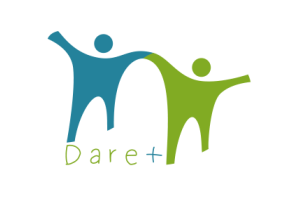
Day One: Session 2. Developing the Dimensions and Levels of the Competence
Targeted competences:
Interpersonal communication
Connection to programme competences or aims
Dimensions and levels of competence
Learning outcomes for the session
At the end of this session trainers will be able to:
- Understand the different dimensions of levels of the competence
Pre-requisite learning/competence
None
Resources
Andrews, J. and Higson, H. (2008). Graduate Employability, ‘Soft Skills’ Versus ‘Hard’ Business Knowledge: A European Study. Higher Education in Europe, Vol.33, No. 4, 411-422.
Canale, M. (1983). From Communicative Competence to Communicative Language Pedagogy. In J. C. Richards and R. W. Schmidt (eds). Language and Communication. New York: Longman, 2-27.
Celce-Murcia, M. (1995). Communicative Competence: A Pedagogically Motivated Model with Content Specifications. Issues in Applied Linguistics, 6, 5-35.
Constanzo, E. (2009). Towards the Development of a Global Communicative Competence: The Integration of Oral and Written Skills in Teaching and Learning a Foreign Language. PORTA LINGUARUM 12, 107-116.
Morreale, S.P., Osborn, M.M. and Pearson, J.C. (2000). Why Communication is Important: A Rationale for the Centrality of the Study of Communication. Journal of the Association for Communication Administration, 29: 1-25.
Sonseca, A., Sahuquillo, O., Martínez-Casas, J., Carballeira, J., Denia, F.D. and Ródenas, J.J. (2015). Assessment of Oral and Written Communication Competences in the European Higher Education Area: A Proposal of Evaluation Methodologies. 1st International Conference on Higher Education Advances, HEAd’15, Universitat Politècnica de València, Valencia.
Session duration: 45-60 minutes.
Number of participants: Between 10 and 20 (so that it encourages effective interpersonal communication).
Session description
- Welcome and introductions. This should be the starting point to share the common views on interpersonal communication.
- Activities to develop the dimensions and levels of the competence (participants would preferably work in groups):
- Short presentation on one topic not well known by the other groups. Trainers must use their dialogical resources to be understood and must be able to construct dialogue.
- Activity to work in groups. Each group will have to convince the other groups of a controversial topic by using dialogue.
- Participants must use different body gestures to communicate with other participants. It would be interesting if participants belong to different cultures where body gestures mean different things. This way, they could show the others that misunderstandings in communication often have to do with culture.
Mode of evaluation (based on Celce-Murcia et al.’s (1995: 10) model of Communicative competence)
This training session will use a variation of a “minute paper” called 3-2-1 as the mode of learning assessment, described below:
At the conclusion of the training, have participants write the following on a sheet of paper which will be collected (this should only take 5 minutes at most):
4. Write 3 take aways from this session for yourself. What do you want to remember about interpersonal communication competence?
5. Write 2 action steps you will put into practice related to improving your interpersonal communication skills in your personal and professional lives.
6. Write 1 burning question you still have about interpersonal communication competence that you plan to research further.




